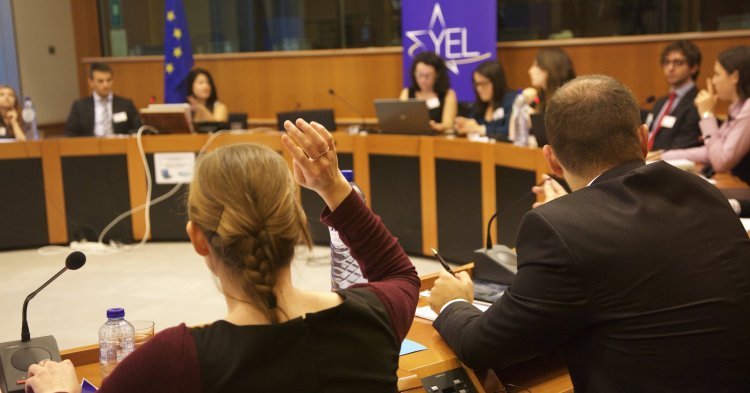Article originally published in the Bulletin
Participating in democratic societies has always been important for young people: naturally, they have different policy priorities than other age groups; their engagement also promises a sustainable future for democracy. With an aging society in Europe it has become even more crucial for young people to do so.
And yet, reality looks different: not even every third young person (18-24 years) voted during the last European Parliamentary election. The participation rate of young people for the British referendum is slightly better with 64%, yet for such a historical vote not as participative as it should have been. 18 months ahead of the next European Parliamentary elections we should therefore not only address questions of European democracy but also review how politicians communicate to and with young people.
To start off, “youth” is not a homogenous entity which is why more than one communication approach is needed: it consists of different groups, some active in political parties, others in non-partisan youth NGOs like ours, and some active in mono issue movements such as LGBTQIA rights or the fight against climate change. But what we share is general millennial dimensions of communications, namely real life or digitally. In real life, young people can often be met in various youth organisations.
This needs to be paired with societal long-term goals: if young people don’t understand the political system, if they don’t know their rights and duties as citizens, they won’t be interested in hearing about detailed political work. Worryingly, schools in Europe often don’t fully integrate civic education into their curriculum, let alone teach about how the EU functions. It is thus no wonder that google trends on “what is the EU” spiked on the day after the British referendum. In lack thereof, our members work in close cooperation with schools. The great interest our network experiences is a good indication that there is a demand for teaching this content and should be further followed up by policy-makers on different governmental levels.
Social media has become an everyday-life tool, especially for young people. Like many elements of our lives, political discussions have moved on there. The question of how to reach youth should hence more be framed as how we connect public discourse on traditional media with the one on social media that currently seem to run in parallel? We would recommend politicians to become active on social media, too. The investment to find out what platform is most popular for young generations in certain regions and to post regular, meaningful updates is absolutely worthwhile. Three principles, however, are important to keep in mind: First, social media is social and has to be used accordingly. Politicians should take users seriously.
If someone reacts or responds, this should be treated like a digital letter from a citizen, and be listened to. In fact, accounts that only post and don’t respond are rarely successful. Consequently, a politician’s social media strategy should include a component that frequently monitors the engagement and allows for reflection on the decision-maker’s own positions. Second, young people shouldn’t be underestimated. Sure, the end of roaming costs can be celebrated but there’s more to us than just our homo oeconomicus. We see how our generation has difficulties finding employment or how people cross the Mediterranean in the hope of a better home. These topics matter, too. But, thirdly, social media needs to be paired up with real-life interaction, creating and strengthening contacts. Politicians shouldn’t be afraid to ask these groups, e.g. the European Youth Forum, for help: they can also support by introducing new young people to your work.
Despite all the advantages of the digital revolution, there are pitfalls to it, too: For instance, twitter allows everyone to report news. This tempts some decision-makers to reply rapidly before knowing the full facts and it facilitates the process of picturing a complex situation in black-and-white due to its character limit. Facts can easily be changed, lies are difficult to detect and weaken the credibility of other credible actors. Platforms that depend heavily on algorithms are also the perfect soil to build echo chambers since they aim for the user to spend more time online and show less controversial posts that might oppose the user’s views.
This confirmation bias is dangerous for everyone, especially to teenagers, as an awareness of the existence of other opinions, the ability to think critically as well as to debate with others - skills needed to maintain a democratic society - are weakened when no critical opinions are shown. A Pew Research Center study showed that 62% of US-American users receive their news from social media; another study concluded that 59% of 2.8 million shared articles happened without having been read. This is why it’s crucial to rethink how we want society to work: How important is quality journalism and fact-checking to us? How can we stimulate critical thinking and allow for better media education?
Some things have already improved: Though twitter, whose main characteristic is formulating snazzy one-liners, has certainly facilitated the current wave of populism, so-called twitter threads, i.e. an argument written in multiple tweets, have become popular when discussing politics. More steps in this direction need to be taken, both by platforms and its users. When it comes to communicating politics, it is utmost time carefully to balance good communication with a reasoned, well-thought through approach by politicians.

Follow the comments: |
|
